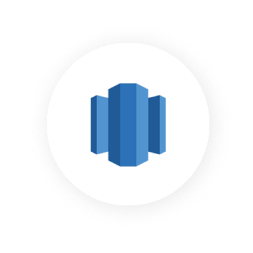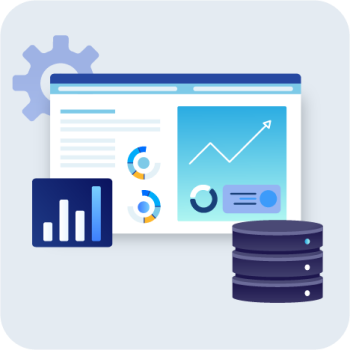The author is a CEO and Co-Founder in Eucloid. For any queries, reach out to us at: contact@eucloid.com
Comparing the major Bigdata Warehouses: How to select the one best suited for your needs?

After the IT revolution back in the 70s, data was initially stored on punched cardboard tokens, which were used to record data entry and calculations. This technique was then replaced with the use of spreadsheets for data entry. Data storage systems have now been developed into this massive entity that is the lifeline of IT.
Data storage and warehousing are two important sectors in IT that have changed fast in recent decades, owing to the rise and advancement of cloud-based storage. It has allowed for more scalability, lower upfront costs, and higher performance than its predecessors.

To finalize a data warehouse for your business needs, you must first be thorough with what a warehouse is and is not. A brief introduction to popular choices in the market and their comparison on some standard parameters will help you inch closer to your desired warehouse subscription. Let us begin.
What are data warehouses?
A data warehouse is a centralized repository where a company keeps all its crucial data assets acquired from multiple sources, such as databases, CRM (Customer Relationship Management) systems, flat files, and applications for data reporting and analysis. Data warehouses are useful business intelligence components because they allow companies to collect all their data in one place. It aids in the acquisition of company insights and the planning of future efforts.
We will look at Amazon Redshift, Google BigQuery, and Snowflake, the three popular, contemporary, and reliable data warehousing technologies in the market today using the three parameters of scalability, usability, and security.
A brief introduction to Amazon Redshift

Amazon Redshift, or simply Redshift, is a fully managed and trustworthy cloud data warehouse solution for large-scale database migrations and data storage and analysis.
- It analyses chunks of data using PostgreSQL against terabytes to petabytes of data in seconds at less than a tenth of the cost of other traditional competitive solutions.
- Redshift falls under the umbrella of AWS (Amazon Web Services) cloud-computing services offered by Amazon.
Redshift is often preferred by businesses with a considerable number of queries and well-organized data sets. Users may interact directly with data stored in Amazon S3 buckets, removing the need for data transfers between databases.
A brief introduction to Google BigQuery
Google BigQuery is a fully managed and serverless data warehouse that uses Structured Query Language (SQL) to extract valuable insights from petabytes of data in real-time.
BigQuery is:
- powered by Google CloudPlatform (GCP)
- available through the REST API.
- compatible with ANSI SQL querying.
- cost-effective as it offers a variety of pricing methods like on-demand and flat-rate pay.
- intelligent, as it contains machine learning capabilities
-
easier to set up as it does not require any infrastructure to set up or administer.
- allowing you to focus on obtaining useful insights using basic SQL queries.
Once you enable your REST API, you can store your data in BigQuery tables. BigQuery organizes the data tables into units called datasets. These datasets are then stored in your GCP project.
Big Query’s architecture employs a column-based storage structure, which allows it to execute queries quicker while using fewer resources. It is the main reason Google BigQuery can manage massive datasets and offer fast results. Because it is an effective means of storing large amount of data, the row-based storage structure is used in transactional databases. For analytical applications, storing data in columns is more efficient since it offers a faster data reading speed.
A brief introduction to Snowflake
Snowflake provides a data warehouse service through a cloud-based data storage and analytics solution. Companies can employ cloud-based hardware and software to store and analyze data. To store your data, you can use Snowflake to construct both data warehouses and databases. Each data warehouse may or may not contain one or more databases. When you establish an account with Snowflake, you will receive access to one data warehouse.

It is a fully managed Cloud Data Warehouse, available to clients as either:
- Software-as-a-Service (SaaS) or,
- Database-as-a-Service (DaaS)
The ANSI SQL protocol is used by Snowflake, and it supports both fully structured and semi-structured data formats including JSON, Parquet, and XML. It has a large user count and processing capacity, and pricing is based on resource usage and storage. Snowflake manages the database and ensures the greatest possible speed when tables are queried. All that is required is the creation of tables, the loading of data, and the querying of that data.
In contrast to RDBMS, there is no need to establish partitions, indexes, or execute vacuum operations in Snowflake.
Comparison Based on Security

- Redshift shares security responsibilities, and they are also in charge of ensuring the cloud's security. Users, on the other hand, are responsible for some aspects of their security, such as creating unique sign-in credentials, SSL connections, and load data encryption, among other things.
- Since the service automatically encrypts and transports data as part of its default settings, BigQuery gives customers column-level security that allows for identification and access status monitoring, as well as the implementation of data security policies. It is part of the Google cloud ecosystem and complies with a wide range of internet security requirements.
- Snowflake's security is reliant on the qualities that your cloud provider prefers. It enables regulated access management as well as high-level data security that complies with most data security requirements.
Comparison based on Usability

- Redshift is best used in circumstances where continual computation is required, such as live dashboards for continuous data streaming and querying via updating. It would also be useful for real-time or near-real-time automated ad-bidding networks, as well as time-sensitive NASDAQ daily reporting.
- BigQuery performs best in systems with spiky workloads, such as when a corporation runs multiple queries on sporadic schedules with a lot of idle time. Machine learning, ad-hoc reporting of difficult queries, sales intelligence solutions for marketing teams undertaking data analysis, and daily recommendation models for various eCommerce applications are some of the systems for which this service would be most useful.
- Snowflake works well with data systems having a more constant and continuous consumption pattern, but it necessitates consistent upscaling and downscaling. This makes it useful for firms that actively query big volumes of data at once to find major trends. It also benefits firms that provide data as a service by allowing thousands of clients to access data for user interface research and data APIs.
Comparisons based on Scalability

- Concurrent files are automatically vertically and horizontally scaled in Redshift. In a cluster, it is also possible to operate up to 500 simultaneous connections and up to 50 concurrent queries. It also allows multiple clusters to access the same data sets for diverse operational and analytical reasons.
- In terms of scalability, BigQuery is comparable to Snowflake. It actively utilizes its computing and storage nodes, allowing users to scale the memory and processing resources of their data based on their requirements. This enables tremendous horizontal and vertical scalability for up to a petabyte of data to be processed in real-time.
- Snowflake's multi-cluster shared data design, which does not require input from database administrators, allows for smooth, automated vertical and horizontal scalability, making it a top choice for enterprises with limited resources.
Conclusion
In terms of security measures, BigQuery takes its security measures very seriously and encrypts every bit of data. Redshift uses several security methods, including SSL and sign-in credentials. In terms of scale and usability, Snowflake covers more geographical areas, works on larger datasets, and has better maintenance, with BigQuery and Redshift closely following.
Posted on : July 12, 2022
Category : Data Engineering
About the Authors
